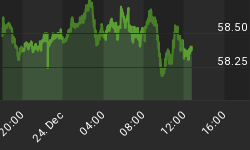The key report today is the U.S. Non-Farm Payrolls Report. Pre-Report guesses are for a loss of 600,000 jobs. Earlier in the week the ADP Employment Report showed a loss of 490,000 jobs and Weekly Job Claims were reported less than expected. If the government reports a number similar to the ADP number then stocks will surge and bonds will plunge. The U.S. Dollar will also get hit hard to the downside. The question is how much of this report has already been factored into the markets.
Overnight, the U.S. Dollar is trading weaker against most major currencies after yesterday's release of the Fed's bank stress test results showed none of the 19 U.S. banks being examined is facing insolvency.
If anything was revealed, it was that more than a few of the biggest banks need to raise more capital to meet the Fed's requirements. This can only be accomplished three ways: by selling assets, converting preferred shares to common stock or asking the government for more money.
From an investor's standpoint there is relief that this stressful (no pun intended) period of economic history is over. This may mean that trader appetite for risk is likely to increase as the worst of the banking crisis may be behind us.
Now that the world knows the financial condition of the U.S. banking system, the U.S. Dollar could get trashed as traders seek higher returns elsewhere. Remember all the money that flowed into the Dollar for safety reasons? Well you can pretty much kiss it good-bye.
June Euros and June British Pounds are trading better in the pre-market as traders seek more risk now that it appears the U.S. banking system is safe. The June Canadian Dollar is surging to the upside as both strong equity and commodity markets push it higher. The June Swiss Franc is trading better as traders are pulling their money out of the U.S. The strong equity market is leading to a revival in the carry trade which is putting pressure on the June Japanese Yen.
June Treasury Bonds and June Treasury Notes are headed for another weekly loss as demand for Treasuries is not what it once was. Investors are clearly dumping Treasuries to seek better returns in the equity markets.
Yesterday's 30-year Treasury Bond auction is being described as a failure but this is not the right word. Demand was slow so the Fed was forced to pay a higher rate. Two weeks of T-Note and T-Bond auctions are over. Now the Fed is set to resume its government bond buyback program next week. Its buying should slow down the rate of the increase in yields.
Equity markets sold off yesterday as traders liquidated long positions ahead of the release of the bank stress test results. Overnight, traders seem a little more optimistic as the markets have regained a little more than 50% of the break. Money is leaving the Treasury markets and seeking higher yielding equities. As long as this practice continues then look for the stock market rally to continue. Today's unemployment report will dictate whether this scenario will persist.
Inflationary concerns have helped buoy the June Gold market this week. Firmer crude oil and an excess supply of cash in the global financial system are helping to support a possible inflationary scenario. News that the European Central Bank has joined the other central banks to offer quantitative easing to help stimulate the Euro Zone economy is a sign that even more money will be pumped into the global economy as quantitative easing is basically the printing of money. Gold and silver traders are anticipating the possibility of a jump in inflation as there may be too much money chasing too few goods. The only way to prevent this from happening will be the development of sound exit plans from the major central banks.
Crude oil traders are continuing to drive prices higher as they speculate on a recovery in the global economy. At this time there remains a worldwide glut of oil, but this excess supply could quickly go away if demand increases as the economy recovers and OPEC cuts production one more time. Venezuela has said that OPEC is looking for $70 and it seems it has the means to get prices there.
















